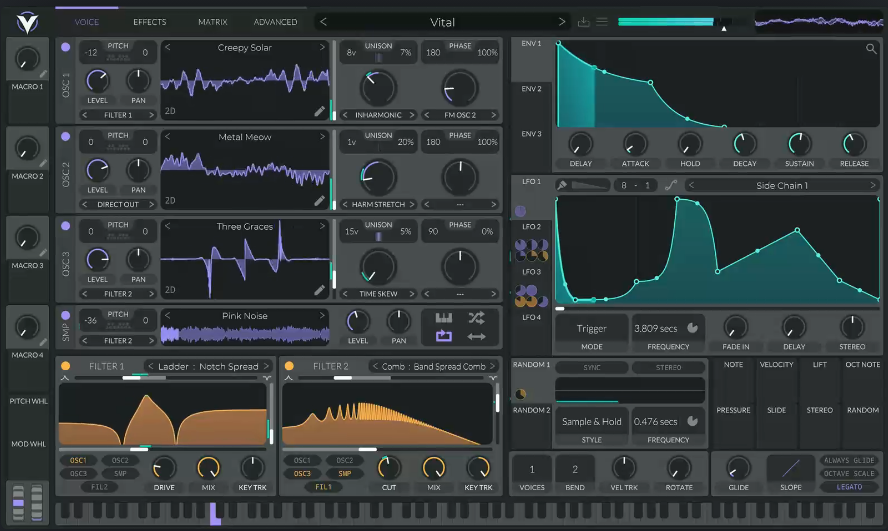Alright, I've had some time to think about it, and we're gonna be staying open to comments. Sorry if this post upset you earlier, it wasn't my intention to be dramatic (though I understand that I most likely was). I'm not great at these things.. yet. I hope Lemmy's cross-instance communication options improve and we can get a better way to comment on posts between different communities later down the line. For now, we have to put in work to make this community and fediverse grow, so we can have a place to share knowledge and emotions that no corporation will run into the ground for profit.
Contents of this post before the decision was made, for reference:
spoiler
This community was created when I just started browsing on Lemmy, so I really had no clue about what is the best way to handle a community here. Considering the nature of fediverse, it's not a question that's easy to answer. And I still don't have a perfect answer, but I think I might be closer to it.
What I want to do is to lock all posts from future comments on sh.itjust.works. I have a couple of good reasons to do this and a couple of reasons to reconsider. I'll go over them in a list and try to keep some perspective on them.
Reasons to lock
I want to direct discussion to music instances for everyone's convenience. A single place for music discussion, so you don't have to switch over multiple posts and check if somebody is talking about the same thing. I understand that the idea of the fediverse is to decentralize, which I fully agree with. Unfortunately, the functionality of Lemmy right now doesn't play well with that idea and provides a horrible user experience in return for following it. Compromises have to be made.
Also, having most music-production discussion, communities and posts in one instance will make it easier to find related content. Browsing communities on waveform is way easier than trying to guess all possible names that a music community might have. For example, if you search for "Music Production" on lemmy community browser, you might not find "Ableton" or "FL Studio" communities that are directly related to it and there are many more community names that are not easily guessable (like there used to be on r***it, with places like r/trees or r/worldpolitics, nsfw warning). I hope you get my point there.
Finally, I feel like a lot of users have anxiety over posting at a correct place (same as me, same as it was on r***it), so restricting comments to one instance will help us reduce anxiety and help first-time commenters and posters make the initial push. (Maybe rewriting the sidebar to be a bit less imposing will help that too)
Reasons to not lock
I understand that some people found this community on sh.itjust.works and appreciate the convenience of being able to do everything here. I don't want to take away from that if I don't have to. Good news is, these problems are known by the devs and better synchronization between instances and cross-posts will come, so the measure is going to be temporary while Lemmy is busy getting better developer support from FOSS community.
In addition, there is an argument to be made about archiving of knowledge and redundancy. If we lock comments to just one instance, if that instance goes down (temporarily or forever), all of the history made on that instance could be gone too.
As far as I know, other servers definitely keep records of servers they federated with, but searching for copies of posts might get more difficult in case of one instance going down as not every server is going to have every community discovered to archive it (and I do not know if there are any other limitations to that feature). Again, that's something I can only partially address as a community moderator, as the issue lies in the platform. It's inevitable that we're going to lose some history if the worst is to happen. Sh.itjust.works isn't immune to that either, so that's that.
Locking down comments won't stop me (or others) from posting here either and I'm going to keep posting here for the forseeable future. So if you're here just for the content, you don't have to worry.
I hope you guys can provide me with some input on this, because as it stands, I don't want to upset what we have right now, so this is something I can only do with your agreement. Let me know what you think about this issue and whether you consider it an issue at all. You can comment here, send me a DM or talk to me on my matrix chat, which should be working. Any feedback will be helpful here. Thanks

Modern games have become too focused on providing a clean, balanced and no-real-obstacles experience. Sometimes I want to play a game that is a cohesive experience without being laser focused on some big idea about how I should play it. As an example, I've recently replayed arx fatalis. It's really fun how you can do everything in that game that you'd want an npc for in any other. It's also fun how each playstyle requires its own big chunk of knowledge about how the game works. Modern games try too hard to be minimalistic and fail to see the fun in a truly open experience. Even when you have options, they have all the fun pre-balanced and pre-optimized out of them. They give you too much info. No sense of discovery